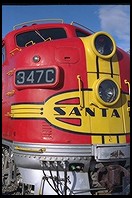
Canon EOS Elan 7
by Philip Greenspun; created 2001
Site Home : Photography : Canon EOS Elan 7
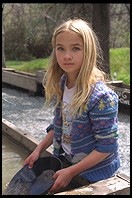 Canon's EOS Elan 7 body is a wonderfully light, wonderfully natural tool. If
you're already an EOS system user, you can adjust to the EOS 7 within a few
minutes, without reading the owner's manual. If you're not an user of the EOS
system, this is probably the best first body.
Canon's EOS Elan 7 body is a wonderfully light, wonderfully natural tool. If
you're already an EOS system user, you can adjust to the EOS 7 within a few
minutes, without reading the owner's manual. If you're not an user of the EOS
system, this is probably the best first body.
One unusual feature of the Elan 7 is that it is one of the quietest single-lens reflex (SLR) cameras ever designed. Rewind is inaudible without an ear pressed against the body. The exposure noises of mirror, shutter, and 4 frames per second film advance are muted.
The Elan 7 has the powerful autofocus (7 sensors) and matrix metering (35 sensors) systems that one would expect from a modern SLR. The 7e model includes an eye-tracking system that sets the autofocus sensor depending on where the photographer is looking.
Note that this camera is called the "EOS 33" in Europe ("EOS 30" with eye-control autofocus) and EOS 7 (with eye control only) in Japan.
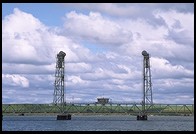 The viewfinder displays about 91
percent of the image plus an LCD display on the bottom... unless you're wearing
eyeglasses, in which case you'll probably find yourself missing either the
corners of the frame or the numbers and symbols in the LCD. The focusing screen
itself is very nice and facilitates manual focusing.
The viewfinder displays about 91
percent of the image plus an LCD display on the bottom... unless you're wearing
eyeglasses, in which case you'll probably find yourself missing either the
corners of the frame or the numbers and symbols in the LCD. The focusing screen
itself is very nice and facilitates manual focusing.
The Elan 7 facilitates simultaneous use of manual and auto focus with most EOS lenses. Using Custom Function 4, you can shift autofocus from the shutter release to the exposure lock button on the rear of the body, which falls very naturally underneath your right thumb. If you have a lens with a "USM" motor, you can leave the lens in AF mode for AF or MF. When you want to focus, turn the ring on the lens or push the button under your thumb. You make a conscious decision. If your subject stays at the same distance and you don't feel the need to refocus, you need not. If CF 4 is set, the camera will never run off wildly and unexpectedly to hunt for focus. Keep in mind that this important feature is not available with very old or very cheap Canon lens designs, e.g., the 50/1.8.
The Elan 7, like all but the cheapest Canon EOS bodies, is controlled with two wheels. One falls under your right index finger. The second under your right thumb. Need to set aperture and shutter speed in manual exposure mode? You've got two wheels in exactly the right places. Need to set aperture and exposure compensation quickly in aperture-priority exposure mode? You've got two wheels in exactly the right places. Need to set program shift and exposure compensation quickly in program exposure mode? Well, you get the idea.
Depth of field preview is accomplished via a small button on the bottom left of the lens mount.
If you've got big hands, big lenses, or a penchant for vertical photography, buy the optional Battery Pack BP-300, which really ought to be called a "vertical grip". It replicates two of the most important body controls: shutter release and exposure lock/AF button. Sadly the BP-300 lacks a control dial, unlike the vertical grips that were built for the EOS-5, EOS-3, and EOS-1 bodies. You're taking vertical pictures, lulled into a sense of comfort by the fact that the shutter release and exposure lock/AF buttons are where your fingers expect. You notice that your subject has moved into shadow and the shutter speed is now too slow. You try to adjust the aperture with the control wheel under your right index finger and... it isn't there. Ouch!
The Elan 7 has reasonable compatibility with all previous Canon EOS flashes. With EX-series strobes you get E-TTL exposure with a preflash, flash exposure lock, high-speed sync, and wireless control of multiple off-camera flashes. With old EOS flashes, you get plain old through-the-lens metering, off-camera control via cords, etc.
The built-in flash is nice in that there is no button to pop it up. You want to use the built-in flash? Pull it up. You're in an idiot mode and the camera thinks that you ought to use the built-in flash? The camera can pop it up.
Maximum sync speed with a standard flash is 1/125th of a second.
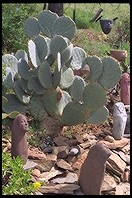 Avoid the "QD" version of this
camera with a built-in date back. The fact that all of your images are being
despoiled with an in-frame set of numbers is indicated only by a small bar on a
rear LCD. You'll always be anxious about whether or not the date function is set
to imprint. The Nikon F5 gets this right, printing the information in between
frames. There is a Contax body that gets this right, saving up the information
and printing it all in the first frame or two. It would be nice if Canon copies
their ideas.
Avoid the "QD" version of this
camera with a built-in date back. The fact that all of your images are being
despoiled with an in-frame set of numbers is indicated only by a small bar on a
rear LCD. You'll always be anxious about whether or not the date function is set
to imprint. The Nikon F5 gets this right, printing the information in between
frames. There is a Contax body that gets this right, saving up the information
and printing it all in the first frame or two. It would be nice if Canon copies
their ideas.
Do not get the Elan 7 as part of a kit with a cheap zoom lens, Canon or otherwise. The 50/1.4 is a good starter lens. Sadly, the 50/1.8 isn't a good choice due to its lack of a USM motor.
I personally advise against the eye-tracking version of the Elan 7. Although this is a very sophisticated system that works in both horizontal and vertical camera orientations, the need for the camera to figure out where you're looking adds a pre-exposure delay. Despite owning four Canon EOS bodies that do eye tracking (EOS-5 and EOS-3), I've never found the feature useful. It is always much more effective to set a sensor explicitly or let the camera's computer system make the choice. Fairness demands that the photo.net reader comments on the EOS-3 reveal that a lot of folks love eye-control AF. The trick seems to be keeing both eyes open at all times. If you put your right eye to the viewfinder and close your left eye, the act of closing the left causes a subtle squint in the right eye. This squint makes it tough for the camera to read the photographer's gaze reliably. Another trick is having enough patience to calibrate, calibrate, calibrate.
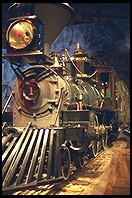 Aside from quiet
operation, the Elan 7 offers some unexpectedly nice features.
Aside from quiet
operation, the Elan 7 offers some unexpectedly nice features.
First is mirror lock-up. If you're doing macro photography or using a big telephoto lens and slowish shutter speeds, mirror lock-up is critical for achieving maximum sharpness. The Elan 7 offers true mirror lock-up. Push the shutter release and the mirror goes up. Push the shutter release again to take the picture. If you engage the self-timer, the camera is smart enough to pre-fire the mirror and then take the picture 10 seconds later. All very nice except for the facts that (1) you need to remember "Custom Function 5 on setting 1" to use mirror lockup, (2) a setting for "pre-fire the mirror only when the camera is in self-timer mode" would be much more convenient for trips where you're taking some pictures on a tripod and some handheld.
Another unexpected feature is that the camera can run on ordinary AA batteries, assuming you've got the vertical grip.
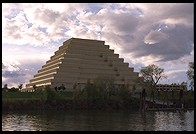 The program
autoexposure has two flaws. Suppose that the camera picks 1/250th and f/5.6. You
want some extra depth of field so you use the main control dial to shift the
program 1/60th and f/11. You wait until you've got your subject framed perfectly.
By this time the camera has timed out and shut off the display. You touch the
shutter release. The exposure is back to its original unshifted value of 1/250th
and f/5.6. Nikon gets this right with the D1. If you shift the program the camera
goes into "P*" mode. And it stays there.
The program
autoexposure has two flaws. Suppose that the camera picks 1/250th and f/5.6. You
want some extra depth of field so you use the main control dial to shift the
program 1/60th and f/11. You wait until you've got your subject framed perfectly.
By this time the camera has timed out and shut off the display. You touch the
shutter release. The exposure is back to its original unshifted value of 1/250th
and f/5.6. Nikon gets this right with the D1. If you shift the program the camera
goes into "P*" mode. And it stays there.
The second problem with program AE is that it doesn't work very well with fast lenses. With a 50/1.4, for example, the camera will pick absurd combinations of 1/750th and f/4. Unless your subject is a racing Formula 1 car you'd probably prefer to get more depth of field (smaller aperture) once the shutter speed reaches 1/250th or so with a 50mm lens.
In the age of $75 microwave ovens that can communicate in English, it is annoying to have to remember that setting 2nd-curtain flash sync is accomplished with Custom Function 6 set to "1". There are only 13 custom functions. You probably won't need to use more than one or two in daily photography. You can carry a little card with all the relevant info. But why should you have to work your brain because Canon was too lazy to program the explanations into the camera and too cheap to give you a display capable of showing them?
Like previous Elans and the EOS-5/A2 body, the rubber-belt film transport system in the Elan 7 relies on an infrared diode for positioning the film. This diode will fog a portion of the frame with Kodak high-speed infrared film, though possibly you'll be able to get away with Konica and Ilford products.
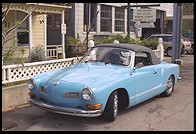 If you
need to spend a lot of time taking pictures in the rain, you might find it
worthwhile to spend the extra money for a weather-sealed body such as the EOS-3
or EOS-1v. Be forewarned that these cameras are staggeringly heavy compared to
the Elan 7, particularly with their vertical grips.
If you
need to spend a lot of time taking pictures in the rain, you might find it
worthwhile to spend the extra money for a weather-sealed body such as the EOS-3
or EOS-1v. Be forewarned that these cameras are staggeringly heavy compared to
the Elan 7, particularly with their vertical grips.
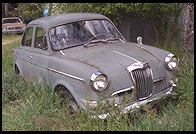 If you're intent on minimizing
size, weight, and cost, consider the Canon Rebel series. The Rebel lacks some of
the nicest features of the EOS system, however. You can't move autofocus from the
shutter release to a button in the rear. There is no rear control wheel, which
makes manual exposure and exposure compensation clumsy. On the plus side, the
latest Rebel's vertical grip includes a shutter release, just like the Elan
7's.
If you're intent on minimizing
size, weight, and cost, consider the Canon Rebel series. The Rebel lacks some of
the nicest features of the EOS system, however. You can't move autofocus from the
shutter release to a button in the rear. There is no rear control wheel, which
makes manual exposure and exposure compensation clumsy. On the plus side, the
latest Rebel's vertical grip includes a shutter release, just like the Elan
7's.
Eyeglass wearers and viewing system snobs should consider the EOS-1v or maybe abandon the EOS system altogether for Nikon, whose bodies typically offer more eye relief.
Here are some pictures from the April 2001 Boston Marathon. The Elan 7's autofocus system was disappointing for this assignment. The camera lost focus in a lot of situations where the EOS-3 would have kept it. Even my memory of the ancient EOS-5's performance is that in some ways it did better for marathon runners.
More: a photo essay from the 1996 Boston Marathon (100th anniversary).
While packing for a two-week trip to Hong Kong, Taiwan, and Japan, I confronted a collection of 20 cameras and camera systems. What ultimately went into the luggage? The Elan 7 body, a 50/1.4, a Canon 24-85 USM zoom, and a combination of Fuji NPH and Kodak Portra 400 NC. Lightweight and low contrast. Here are some of the results:
How did the camera perform while exposing 15 rolls of film? Very reliably. The computer got confused once and the camera remained frozen until the batteries were removed and reinserted. Otherwise the camera performed as expected, which is to say that its inability to focus in low light became ever more apparent and ever more annoying. And this is with a 50/1.4 lens mounted most of the time!
Text and pictures
(c) Copyright 2001 Philip
Greenspun.